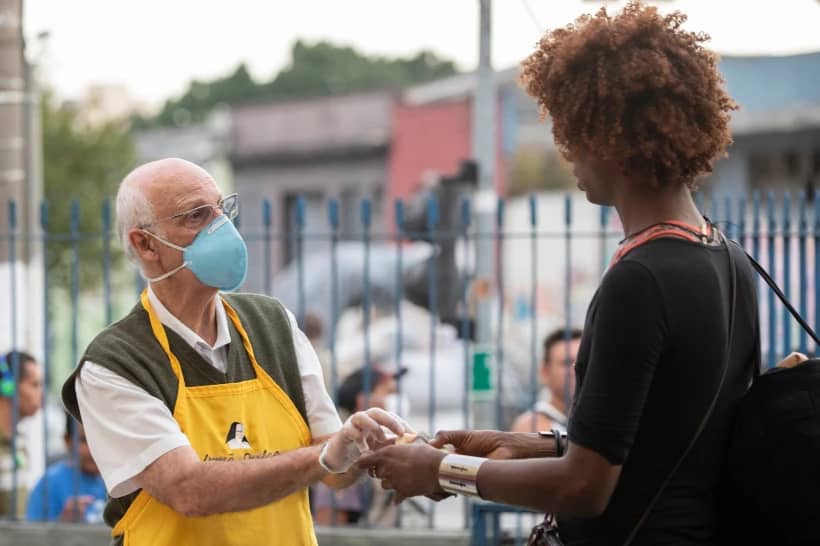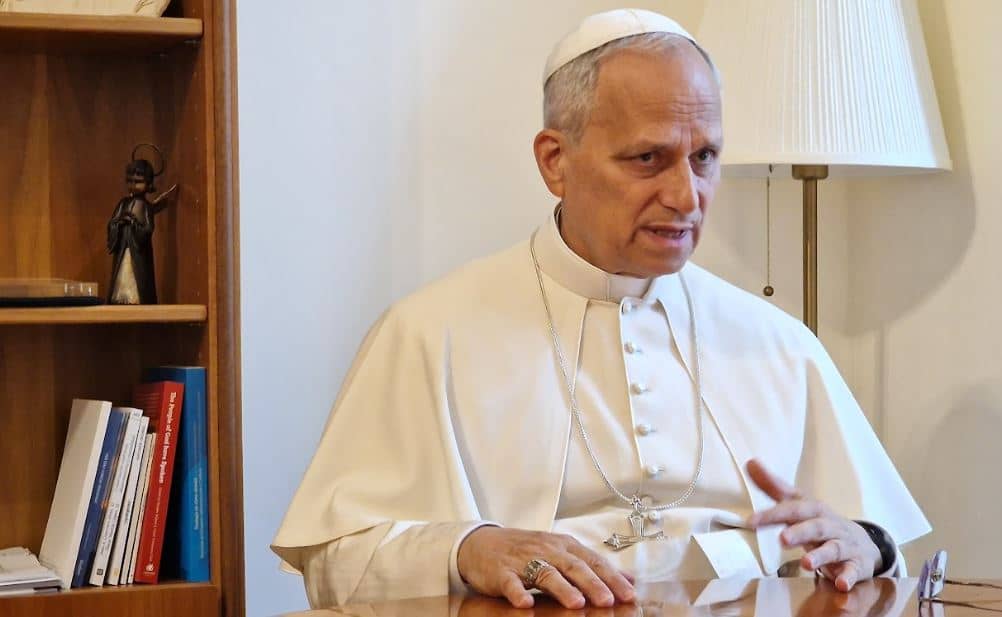ROME – Rocio Figueroa, a theologian and sexual abuse survivor, has reached a conclusion some may find shocking or hard to accept, but which she insists is abundantly supported: That Jesus himself was a victim of sexual abuse, a concept survivors who participated in her study said could be helpful for the Church.
Among other things, survivors said that while seeing Jesus as a victim would likely help priests and church hierarchy sympathize with abuse survivors, there may still be a fear of putting Christ and sexuality in the same box due to what they called an ecclesial cultural “taboo” on sexuality.
Speaking to Crux, Figueroa said that faced with the current clerical sexual abuse crisis rocking global Catholicism, the Church “is compelled to review and reassess” its theological approach to sexual abuse.
As part of her own effort to do just that, Figueroa conducted a study with theologian David Tombs titled, “Recognizing Jesus as a Victim of Sexual Abuse: Responses from Sodalicio Survivors in Peru.”
Tombs was among the first to publish on the concept of Jesus as a victim of sexual abuse in 1998, but the topic never gained much traction. However, Figueroa said that the study she and Tombs did together has drawn considerable interest since its publication earlier this month.
Figueroa is a former member of the Marian Community of Reconciliation (MCR), a pontifically-recognized Society of Apostolic Life. Layman Luis Fernando Figari, who founded the Sodalitium Christianae Vitae (SCV) in Peru in 1971, was sanctioned by the Vatican in 2017 after it was revealed that he and other high-ranking members had perpetrated years of sexual, physical and psychological abuse inside the community. Figueroa has reported being abused by one of the high-ranking members of the male branch of the SCV when she was 15.
Currently a lecturer in Systematic Theology at Good Shepherd College in Auckland, New Zealand, and an External Researcher at the Centre for Theology and Public Issues at Otago University, Figueroa has spent the past four years researching the spiritual impact of clerical abuse.
Published earlier this month in English and in Spanish, her study on Jesus as a victim of sexual abuse follows a research project called “When Did I See you Naked?” launched in 2018, which focused on survivors of the SCV and the consequences of what they experienced.
In the recently published study, Figueroa and Tombs highlight the reactions of eight victims of sexual abuse within the SCV to the idea of Jesus as a victim. Referring to the small number of victims included in the study, Figueroa said it was “not a quantitative study, but a qualitative” one.
“We didn’t want to make general conclusions,” she said. “We wanted to go in-depth into the answers of the survivors.”
Figueroa said there were three main questions she and Tombs wanted to address, the first of which was whether Jesus’ torture and crucifixion involved some form of sexual abuse. The second two questions focused on victim reactions to the historical proofs, and the impact the idea would have on the Church and the general understanding of God’s compassion in the world.
According to Figueroa, after exploring the historical context of the Gospels, the answer to the first question came out to be a clear yes.
In reading what are known as the “Passion narratives” of the Gospel, which describe Jesus’ arrest, trial and crucifixion, at various points they recount how “Jesus suffered forced stripping.”
“Three times he was forced to take off his clothes, and it was in front of a cohort of 500 soldiers,” Figueroa said, adding that the purpose of this was “sexual humiliation.”
She stressed that there is a difference between sexual humiliation and sexual assault. While both are considered abuse, “there are different forms of abuse,” including both sexual humiliation, which includes forced nudity, mockery, stripping or touching, and sexual assault, when the physical act takes place.
In the case of Jesus, Figueroa said it was common practice for both the Jewish community and the Roman Empire to humiliate their victims as part of the torture process.
“It was also a common practice to crucify prisoners absolutely naked,” she said, and referring to the scene of Jesus’ crucifixion in the Gospel of John, she noted how the evangelist writes that Jesus was stripped and the soldiers cast lots for his clothing.
“The reality is that Jesus died naked. The aim was not just to kill the victim, but was also to humiliate, to sexually humiliate,” she said, explaining that although artistic representations of Jesus on the cross always depict him covered with a cloth, that likely was not the case.
“Perhaps they felt it was too scandalous, too strong, too shocking to see Jesus so human, so realistic,” she said.
According to Figueroa, survivors’ responses varied. While all were somewhat shocked about the idea of Jesus being a victim of sexual abuse, they agreed he likely was given practices at the time.
Answers differed to the question of whether seeing Jesus as a victim of abuse would help survivors, with some saying it would only be helpful for survivors who still practice the Christian faith, while Jesus would be irrelevant for those who have left the Church.
However, she said all of the victims agreed that recognizing Jesus as a victim of sexual abuse would be good for the Church.
“They said the problem is that the Church has never faced the reality of sexuality in a healthy way (and) if they are not able to also see the sexuality of Jesus, the sexuality of human beings, they are not able to see the perversion that’s sexual abuse,” she said.
Survivors, Figueroa said, predicted that it might be difficult for the Church to accept Jesus as a victim of sexual abuse, but said doing so would help the Church to be less “Puritan,” forced to face the full extent of Jesus’ humiliation, and it would also help priests and hierarchy to be more sympathetic with victims who come forward.
“If you follow Jesus and you see the victims, you will see the countenance of Jesus in the victims, that Jesus has suffered the same thing,” she said.
Figueroa said part of the reason for the study was to foster a more precise understanding of human sexuality and sexual abuse. Even though sexuality is an important and “essential” aspect of human nature, she said, “it has been dodged in many Christian realms as something accidental and only acceptable for married people. Or worse, as a dark source of a multitude of sins.”
“It seems that when the scriptures affirm that when Jesus was tempted in everything, all sexual dimensions of his life were excluded as if sexuality were incompatible with the figure of a human Jesus,” she said, explaining that in her view, the Church often continues to have a “Platonic and negative” concept of the body and of sexuality.
Speaking of the abuse crisis, Figueroa voiced belief that “all these deviations bring sexual abuse, because if you are repressed, if you don’t have a healthy vision of your sexuality, you can also deviate your sexuality and that is what has happened.”
Figueroa voiced her belief that the Church also can at times foster a warped understanding of virginity, seen in the veneration of saints such as Maria Goretti known as martyrs of purity, having died in order to preserve their virginity.
While resisting unwanted advances and the veneration of people who have chosen to give up their lives rather than allow themselves to be violated is admirable, she said that to some extent the Church is promoting the idea that “the value of virginity in a woman is more valuable than her life itself.”
When it comes to Jesus, Figueroa said, “If we see Jesus in his human reality, and that he himself suffered sexual humiliation and he felt what a victim could feel, that’s powerful. He also felt ashamed in his body. He felt mocked, he felt vulnerable, (like) a victim feels when their body is exposed without respect.”
As a victim of sexual abuse herself, Figueroa said that when she first read Tombs’ 1998 article outlining the case for Jesus as a victim of sexual abuse, “I felt absolutely consoled.”
“When you’re in that crisis, you think that God abandoned you,” she said. “So when you see that Jesus suffered, Jesus knows what I have lived, it’s a source of big consolation.”
















